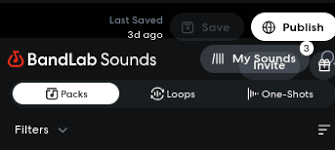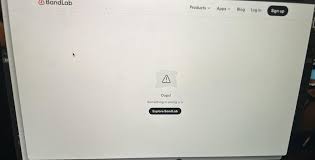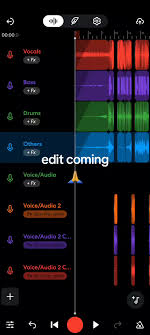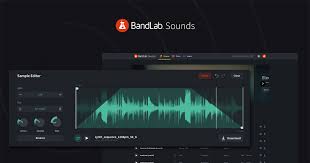When musicians first start exploring BandLab, one of the most common questions they ask is: can you change dynamics in BandLab? The short answer is yes—you absolutely can. But to really get the most out of BandLab’s free digital audio workstation (DAW), you’ll want to understand not only how to adjust dynamics but also how to use its tools to make your tracks sound polished, expressive, and professional.
This article will walk you through everything you need to know about controlling dynamics in BandLab, from the built-in effects and automation to practical mixing techniques. Whether you’re making hip-hop beats, recording a live guitar session, or producing electronic tracks, dynamic control is key to creating music that sounds balanced and engaging.
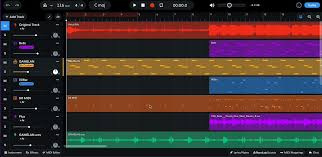
What Do Dynamics Mean in Music Production?
Before we dive into BandLab’s features, let’s clarify what “dynamics” mean. In music, dynamics refer to the differences in volume between soft and loud parts of a track. Changing dynamics helps you:
Build tension and release in your music
Highlight important sections like a chorus or drop
Prevent distortion and clipping
Create professional-sounding mixes
In BandLab, controlling dynamics comes down to tools like volume automation, compression, limiters, gain adjustments, and EQ balancing.
Can You Change Dynamics in BandLab?
Yes, BandLab gives you several ways to change and control dynamics, even though it’s a free DAW. Here are the main methods:
Volume Automation
BandLab lets you draw automation curves for any track. This means you can make the vocals fade in slowly, increase the guitar volume during a solo, or lower the bass in a verse. Automation is the most direct way to manually control dynamics.
Compression and Limiters
Dynamics aren’t just about raising or lowering volume manually. With BandLab’s compressor, you can smooth out uneven vocal recordings or punch up drums. Limiters are also available, ensuring your track doesn’t exceed a certain loudness.
Gain Staging
BandLab includes a gain control on each track. Adjusting gain before applying effects ensures that your audio is balanced from the start, preventing clipping and distortion.
Equalization (EQ)
While EQ is mostly about tone shaping, removing low-end rumble or taming harsh highs can make dynamics feel more controlled across the mix.
Mastering Tools
One of BandLab’s standout features is its free AI-powered mastering tool. Once you finish a mix, you can run it through mastering to automatically balance dynamics, tighten up levels, and make it streaming-ready.
Step-by-Step: How to Change Dynamics in BandLab
If you’re new to BandLab, here’s a quick walkthrough:
Open your project in BandLab’s Mix Editor.
Select a track you want to edit (vocals, guitar, drums, etc.).
Click the Automation button (looks like a zig-zag line).
Choose Volume automation and draw in your dynamic changes.
To even out sound, add a compressor from the Effects panel.
Adjust the threshold, ratio, attack, and release to taste.
Use gain staging before effects to avoid clipping.
Once your mix is complete, run it through BandLab’s Mastering engine.
This workflow allows you to have full creative control while ensuring the final mix sounds smooth and professional.
Why Dynamics Matter in BandLab
Many beginners underestimate dynamics and focus only on adding effects like reverb or delay. But without good dynamic control, your track will either sound flat or chaotic. For example:
A rap vocal without compression may get lost in the beat.
A drum loop without volume automation can overpower softer instruments.
A guitar track without EQ and gain staging might sound muddy.
By using BandLab’s tools properly, you can make your music sound more polished—even compared to tracks made on expensive DAWs like Ableton or Logic Pro.
Real-World Example
Let’s say you’re producing a lo-fi hip-hop track in BandLab. The beat has a chill drum groove, soft piano chords, and a vocal sample.
Use volume automation to gradually fade the piano in during the intro.
Add a compressor to the vocals to keep them consistent throughout.
Lower the bass gain slightly in the verses so the drums and melody shine.
Use AI mastering to bring everything together at the end.
These small dynamic adjustments make the track more professional, giving it that “Spotify-ready” sound.
Alternatives to BandLab for Dynamic Control
While BandLab is excellent for beginners and budget-conscious musicians, some producers eventually move to paid DAWs for more advanced features. Alternatives include:
Ableton Live – Great for electronic music and live performance.
FL Studio – Known for beat-making and hip-hop production.
Logic Pro – A pro-level DAW with deep mixing tools, available on Mac.
Reaper – Affordable with advanced mixing and dynamic control.
Still, for most beginner and intermediate users, BandLab provides more than enough tools to handle dynamics effectively.
Conclusion
So, can you change dynamics in BandLab? Absolutely. With volume automation, compression, gain staging, EQ, and AI mastering, BandLab gives you all the tools you need to shape dynamics like a pro. The best part is that it’s completely free and works in your browser or as a mobile app.
If you’re serious about making music sound polished, mastering dynamics should be one of your top priorities—and BandLab makes that learning curve surprisingly accessible.
FAQs About Changing Dynamics in BandLab
1. Is compression available in BandLab for free?
Yes. BandLab includes a built-in compressor that works on both desktop and mobile.
2. Can I automate effects like reverb or EQ, not just volume?
Yes. BandLab allows automation of multiple parameters, not just volume.
3. Does BandLab have a limiter to prevent clipping?
Yes. A limiter is included in its effects suite, useful for controlling peaks.
4. Can I control dynamics in the mobile version of BandLab?
Yes, though it’s slightly simplified compared to the desktop Mix Editor.
5. Do I need third-party plugins for dynamic control in BandLab?
Not necessarily. BandLab’s built-in tools are strong enough for most users, but advanced producers sometimes add VST plugins after exporting tracks.

